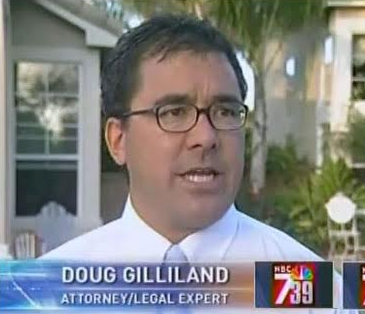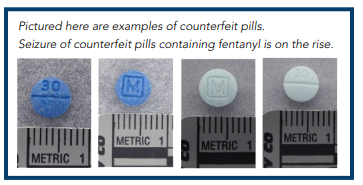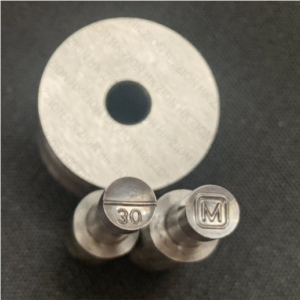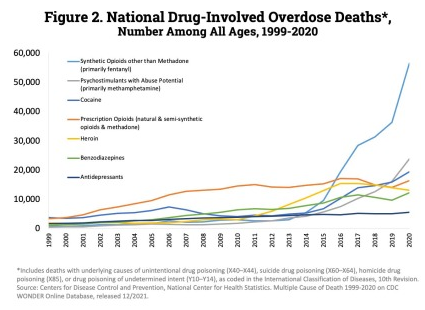What is the Penalty for Selling Drugs in California?
- By Douglas S. Gilliland, Esq.

What is the penalty for selling drugs in California? Fentanyl is a game changer. You can be charged with murder. See my July 31, 2022 post, “Murder in La Jolla – Fentanyl Laced OxyContin.”
Prosecutors across the state of California are engaging in a controversial practice. They are charging individuals that sell drugs with murder when the buyer dies of a fentanyl overdose. Critics of this practice argue that the punishment does not fit the crime. They also argue that the practice harkens back to the war on drugs causing mass incarceration and jail overcrowding, even for minor drug offenses. Advocates of the practice argue that we are in a nationwide fentanyl crisis. And desperate times call for desperate measures. They also argue that charging the seller with murder will deter others from engaging in the same conduct which will save lives.
With strong arguments on both sides of the debate, one thing is for sure. If someone faces murder charges for selling fentanyl, they better be ready for the fight of their life; or more accurately, the fight for their life.
To start at the beginning, the first question is: What is fentanyl? Fentanyl is a powerful synthetic opioid. Opioids are a class of drugs that include both legal prescription drugs such as oxycodone (sold under brand names such as OxyContin), oxycodone and acetaminophen (known as Percocet), oxycodone and aspirin (known as Percodan), hydrocodone (sold under brand names such as Vicodin, Lortab, and Lorcet), codeine, meperidine (Demerol), and morphine, and illegal street drugs such as heroin. They function to block opioid receptors in the nervous system which causes pain relief. However, this also causes euphoria which leads to intense desire and addiction. And fentanyl is 50 times more powerful than heroin and 100 times more powerful than morphine which makes it highly addictive and deadly.
Where does fentanyl come from? Fentanyl comes primarily from China and Mexico. However, the DEA and CDC are now finding that India is becoming a source of origin for fentanyl.
What does fentanyl look like? It doesn’t matter. For what it’s worth, pharmaceutical grade fentanyl is a white powder. Illegally manufactured fentanyl can be off-white, grey, or tan. However, it is most commonly hidden in other drugs such as cocaine, heroin, MDMA, Xanax, methamphetamine, and fake OxyContin pills. This is called “lacing” or being “laced.” As the blue pills in the illustration below shows, it does not matter whether illegally manufactured fentanyl is white or off-white when the pill being laced is blue.


Why are drug traffickers lacing other drugs with fentanyl? Because fentanyl is powerful, and cheap. So the end-user gets the desired euphoric effect (provided they don’t die), and the product is cheap which means profit margins are high for the seller. Plus, by lacing other opioid drugs, the fentanyl-laced-market captures those already addicted opioids during our national opioid crisis. And lacing other non-opioid drugs such as Xanax, MDMA, and cocaine further enlarges their market.
How much fentanyl will kill me? A fatal dose of fentanyl is 2 milligrams. To put that in perspective, a regular tablet of Bayer aspirin is 325 milligrams. A typical baby aspirin is 81 milligrams. So if you took a baby aspirin and cut it into 40 pieces, each piece would be a deadly dose of fentanyl.
Why has fentanyl become a national health crisis? This is a complicated question. The easy answer is that lacing other drugs with fentanyl creates a more potent drug that is relatively cheap. So the product gives the desired euphoric feeling for the buyer, while providing a good profit margin for the seller.
However, addiction plays a very large role in this equation. Many years ago, before the fentanyl crisis, I represented a young couple that both came from very affluent families. They were both college athletes, were very fit, and very health conscious. But they both suffered injuries while playing their sports. When their surgeons stopped refilling their opioid prescriptions, they met someone at a party that said heroin had the same effect as the the prescribed opioids, but is much cheaper, and readily available on the streets. Shortly, they were both addicted to heroin, a substance neither one would have even thought of trying prior to their injuries and subsequent opioid addiction. Their addiction began with completely legal use of prescribed opioids under the supervision of medical doctors, and they both ended up as heroin junkies.
In addition, an increase in fentanyl related deaths has developed in minors and young adults. Risk-taking is more common in this age-group, especially when alcohol is consumed which lowers inhibitions. That is why we see such tragic cases involving minors.
Also, when someone dies of a fentanyl overdose, they are rarely seeking fentanyl. Again, fentanyl is used to lace other drugs, both illegal ones such as heroin, but also legal drugs such as Xanax. Someone may try Xanax at a party. If they like the effect, they seek to buy Xanax on the street, or through social media apps. The DEA indicates that the most popular app for selling these drugs are Snapchat, Facebook, Facebook Messenger, Instagram, TikTok, and Youtube.
Finally, the sellers often do not even know what they are selling. Lacing other drugs with fentanyl often happens further up the supply chain or during the illegal manufacture of counterfeit pills, long before the final seller even acquires the drugs/pills. Do these OxyContin’s contain fentanyl? If so, how much? A fatal dose? These counterfeit pills are manufactured illegally. So any stamp on a pill like a Blue 30 (counterfeit hydrocodone) is meaningless. You may take one and get high, or you may take one and die. The graph below shows the skyrocketing number of fentanyl related deaths as compared to other drugs. As proponents of the murder charges would argue, this supports the argument that “desperate times call for desperate measures.”

What are the consequences of a murder charge? Under California state law, murder is governed by Penal Code section 187. The sentence for violating that code section is 25 years to life in state prison. Generally speaking, this requires a showing of intent to kill. This is very difficult for even best prosecutors to prove. However, by charging a defendant with murder, the prosecutor can also prove lesser offenses that are include within the general rubric of murder. When first degree murder is charged, the prosecutor may also prove second degree murder. Second degree murder does not involve intent to kill. It requires implied malice which is proven by a “reckless disregard” of risk to life. When someone knowingly sells fentanyl laced drugs, a decent argument can be made that the defendant acted with a reckless disregard of rish to life. The sentence for second degree murder is 15 years to life in state prison. Importantly, a sentence of 15 years to life is a life sentence. The “15 years” simply means they can be eligible for parole in 15 years. And parole is not often granted. Then, there are also lesser included offenses of voluntary and involuntary manslaughter.
What to do if you or a loved-one has been charged with a fentanyl related murder? As you can see, these cases are complex because the underlying facts of each one vary greatly. For example, take the case of someone that knows they are selling fentanyl laced pills and really does not care. If fact, they try to hide the fact that the pills contain fentanyl. And a death from fentanyl toxicity results. Compare that with a case were a dealer sells counterfeit pills laced with fentanyl. The buyer takes the pills, not knowing they contain fentanyl, and sells one pill for $25 to a friend at a party. The friend dies from fentanyl toxicity. Should the person that sold a single pill for $25 be charged with murder like the drug dealer in the first case? The answer is, likely, yes.
There are many defenses to these cases. For example, how strong is the prosecutor’s evidence to show that the seller knew the pills contained fentanyl. Are there text messages or other evidence that show the seller knew they were selling fentanyl? If so, that is a problem particularly with the prospect of second degree murder and manslaughter. In addition, since fentanyl is often combined with other drugs, did the consumer really die from fentanyl, the other drug(s), or a combined effect from “all of the the above.”
If you would like to discuss a fentanyl related prosecution, please feel free to call me at (619) 878-1580 or email me at [email protected]. This phone number and email are 100% confidential. I am frequently in court. So you should feel comfortable sending an email or leaving a voice message knowing it will remain 100% confidential.
